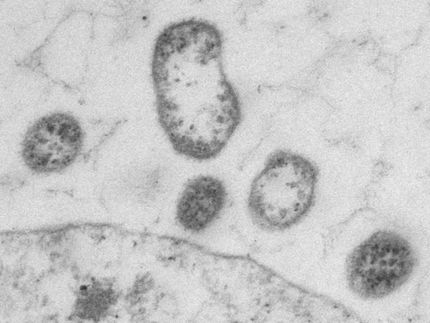Decoding the language of immune responses
Research has implications for improved immunotherapy treatments
Fever, cough, sore throat – symptoms in the spotlight in the era of COVID-19 – are just some of the tell-tale signs of our body’s immune system kicking into action against an unwanted intruder. Whether triggered by an infection, an allergen, or a vaccine, immune responses are driven by a complex array of cellular processes that can play out over several days or even weeks.

Symbolic image
Photo by Walkator on Unsplash
A lot is known about the overarching processes at play in immune responses. But because of the sheer numbers of variables involved, pinpointing what to focus on to develop treatments or vaccines proves very much like looking for a needle in a haystack. This may now change thanks to a new study by researchers from McGill University and the US National Cancer Institute (NCI), published recently in Science.
It focused on a fundamental process in the immune system: the role of proteins called cytokines in signalling and kickstarting a body’s responses.
The crucial role of the messengers
Our immune system is often characterized as a battle. Certain critical white blood cells (called T cells) travel through the bloodstream and lymphatic systems and into tissues, searching for traces of microorganisms and other invaders known as antigens. To avoid attacking healthy cells indiscriminately, T cells circulate until they recognize a specific antigen; only then do they send out messengers in the form of cytokines to activate an alert system and signal that all is not well.
“You might think that there are many, very different parameters in the immune response that are crucial – for instance, the number of T cells produced to fight the invaders might vary, or the number of invaders (antigens) themselves,” explains Paul François, the McGill biophysicist who led the data analysis team, which included McGill physics PhD students François Bourassa and Thomas Rademaker. “But the big surprise is that, actually, what really matters is antigen strength.
Crunching numbers helps pinpoint essentials
Until now, it has been difficult to measure antigen strength – seen in how effectively an antigen triggers T cells to respond – independently of the quantity of an antigen present in any given experiment.
But by using a data-driven approach, and thanks to the crucial collaboration with the NCI, François and his colleagues have been able to decode the highly variable phenomenon of cytokine production to give a reliable readout of antigen strength. This is potentially very useful for predicting how well a vaccine candidate or immunotherapy drug might work.
To study this phenomenon in detail, the NCI researchers, led by Grégoire Altan-Bonnet, developed a robotic platform to perform dozens of experiments at once, exposing T cells to various antigens and conditions. Sooraj Achar, a graduate student in the Altan-Bonnet lab, optimized the automated system in order to gather vast amounts of data in a fraction of the time it would have taken to do the same experiments by hand.
“Assembling a comprehensive map of the dynamics of cytokines generated by T cells in very diverse settings present a challenge and an opportunity to better understand how T cells “see” the antigenic world, and orchestrate immune responses,” pointed out Altan-Bonnet.
The McGill members of the team then used machine learning to process the data generated by those experiments, and mathematical models to capture meaningful patterns in the data. This data-driven modelling revealed surprisingly simple rules at the heart of what otherwise might appear to be a highly complex process subject to multiple variables
A spectrum of immune reactions?
The analysis also showed that patterns of cytokine release carried information about the type of antigen encountered and distinguished six distinct cellular responses rather than the three types usually recognized.
“This supports the idea that immune responses exist along a spectrum rather than as a binary on-off switch,” adds François. “There may be different levels of immune response that can be tuned to the right level of alert depending on the complexity of the situation.”
This new understanding is likely to enhance strategies for immunotherapies that rely on T cells engineered to target the tumors of a patient.






















































